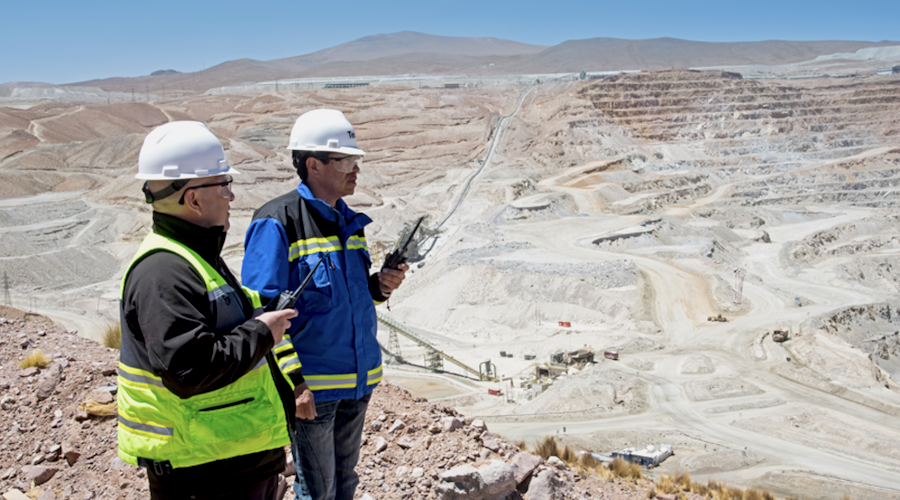Roundup 2011: Exploration & Commodities Notes, Part 1
By Dan Oancea, InfoMine
AME BC’s 28th annual conference, the world’s premiere technical exploration conference, took place in late January 2011 at the Westin Bayshore in Vancouver, British Columbia. It boasted some 7,000 visitors, a record-breaking attendance level.
Here are my short notes on some of the exploration and commodities topics that were presented by expert geologists, miners and mining investment analysts at a few of the technical sessions I managed to attend:
EXPLORATION: Porphyries
We started by having a look at a 6 km vertical transect of the Yerrington, Nevada porphyry copper deposit. We were quick to learn the importance of retrograde processes that are most of the time overlooked when analyzing this type of deposit.
In this case the anomaly consisted in the presence of non-magmatic fluids i.e. sedimentary brines (rock salt) that were able to transport some of the metals to surface as thermal convection cells generated by the cooling magmatic intrusion. We had saline brines, magmatic heat and some ground preparation (fracture pathways).
The copper ore forming magmas are:
– Enriched in Sr, Eu and V;
– Depleted in Y, Zr, Sc and Yb.
Explorers would be advised to calculate discriminants – i.e. enriched elements/depleted elements for screening the rocks that are possibly sources of mineralization.
Copper rich (and gold poor) magmas usually have a Sr/Y ratio >= 40 and a V/Sc ratio >= 10.
When it comes to the Laramides of southwestern America six of the world’s largest porphyry copper deposits are outcropping there and we have to know that only a few of them were made economic by supergene processes. Most of them were formed by multiple distinct mineralized episodes separated by millions of year- intervals.
The fact remains that many of the Laramide deposits are open at depth and have huge potential. It is also important to recognize the vertical zonation of the alteration pattern: Na/Ca in the roots of the system, followed by greisens displaying coarse muscovite and K feldspar alteration close to the surface.
Questions that have to be answered by porphyry explorers:
– Type;
– Size;
– Level of exposure;
– Post-ore structural setting.
Heberlein Geoscience delivered some excellent news for Serengeti Resources’ Kwanika grassroots copper-gold deposit. But first let me remind you that Kwanika is a blind deposit – there is no outcrop – covered by 20-40m till and up to 300m post mineral consolidated rock cover.
In 2009, Geberlein tested and fine-tuned their geochemical methods and was able to identify a strong gold-copper-tungsten anomaly over a part of the deposit that was already known to Serengeti. In 2010, they expanded their survey and identified another strong anomaly, this time in untested ground.
Geberlein tried different methods:
– Sampled the charcoal (old forest fires) from the soil profile, as we all know that charcoal is highly adsorptive;
– Sampled the bark scales;
– Sampled the fir twigs; and,
– Sampled the Ah soil horizon.
Best results were returned by sampling the Ah horizon (tungsten) and using ultratrace aqua regia and/or Na pyrophosphate (distilled water returned less clear anomalies).
The vegetation (bark scales through aqua regia unashed) survey returned a halo type anomaly which is good at regional scale only – e.g. Tl and As increase the footprint of the buried mineralization at surface.
Charcoal results were not as good as those returned by sampling the Ah horizon.
The Alaskan Pebble copper-gold porphyry deposit was considered to represent a long lived magmatic & tectonic active system. Geological interpretation of the mineralized event is that the aquitard hornfels laterally deflected the ascending mineralizing fluid flow.
The most important fact when it comes to the region’s potential for new discoveries is the fact that magnetic and gravimetric data indicate that there are more buried porphyries, most likely located at fault intersections: district scale and cross-faults.
Kiska needs to increase tonnage at their Alaskan Whistler porphyry gold-copper deposit but it seems that they won’t have that many problems in finding more mineralization as their deposit is located in the apex of a batholith which has many other apophises, some of them also mineralized – i.e. according to their geological interpretation.
Funny things happen in the exploration business and sometimes you could find that a mineral deposit is buried in your own backyard. At Imperial Metals’ Huckleberry copper-molybdenum mine located in central British Columbia, they were in need of extending the mine life so more prospecting and exploration was planned. They sent the prospectors out and before lunch the very first day (!) they came up with a 1.6% copper sample from an outcrop located close to their mining operations.
That and many other new discoveries (big or small) should refute the “everything good was already discovered,” narrow-minded corporate thinking that we all know very well. Yes, in good ol’ British Columbia (not to mention Yukon and other “far flung” Canadian and American places) there is still enough ground that has not seen a decent amount of boots on the ground, so believe me that the “Go West, young man” slogan is still valid, at least in exploration geology.
{{ commodity.name }}
{{ post.title }}
{{ post.date }}


Comments